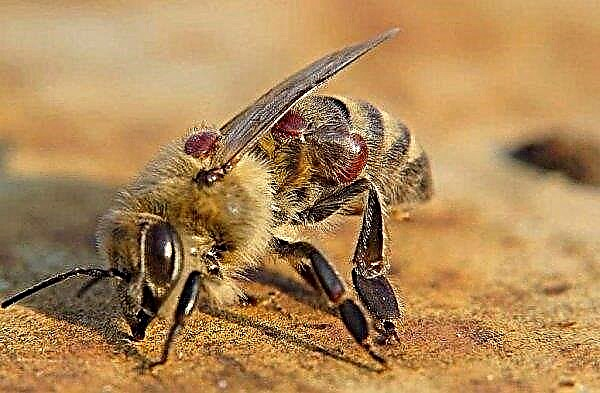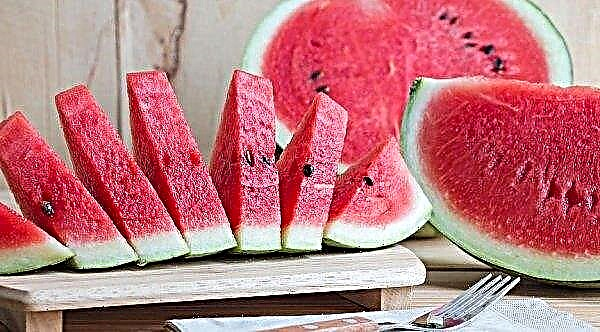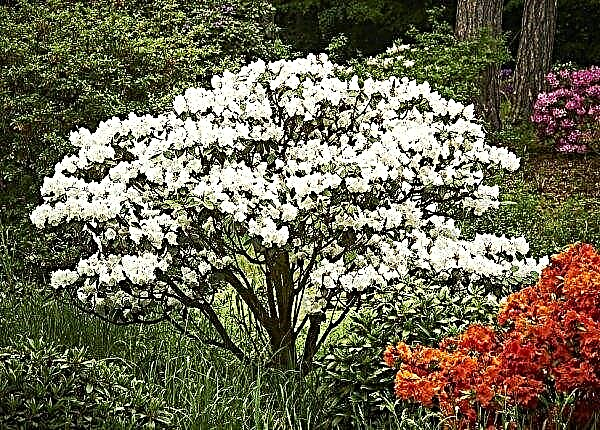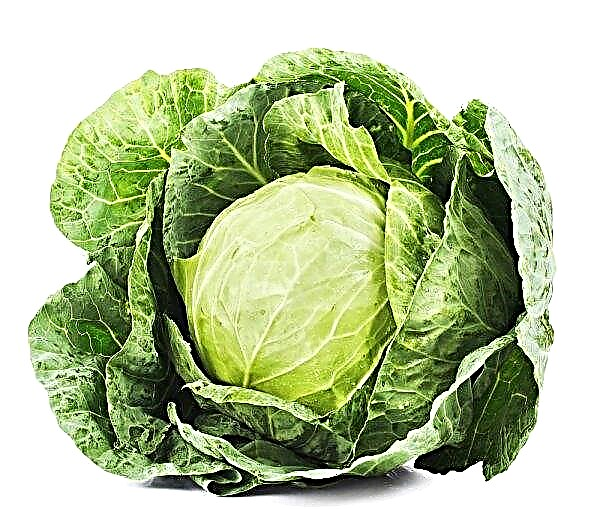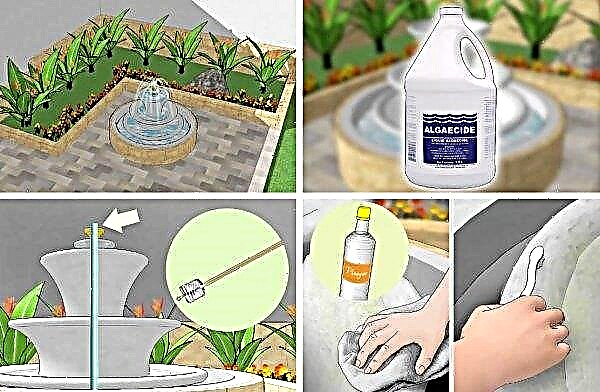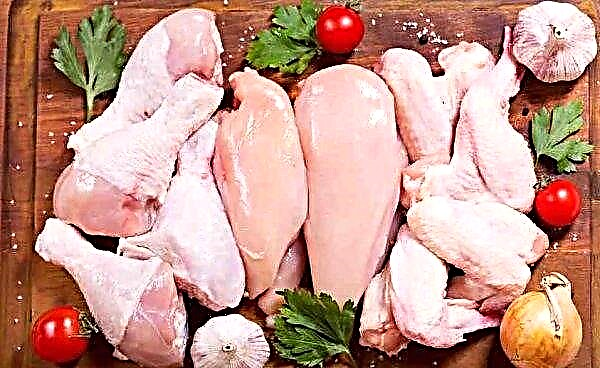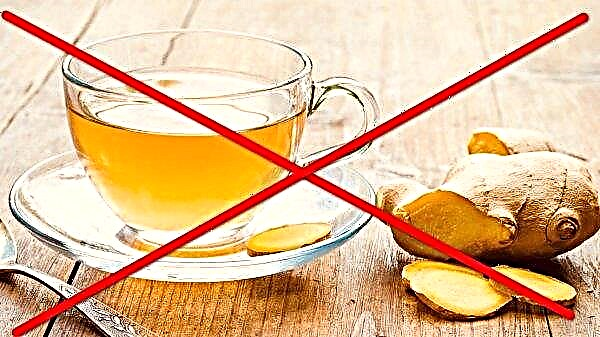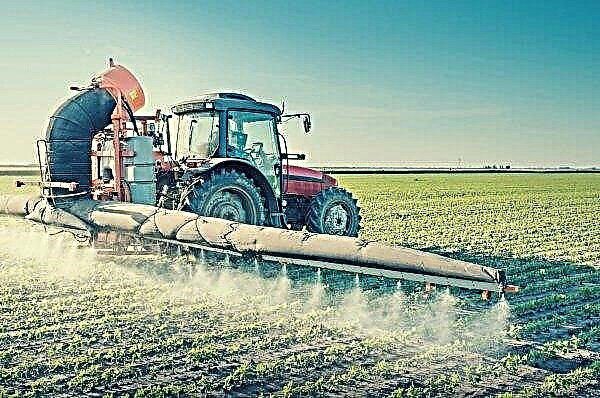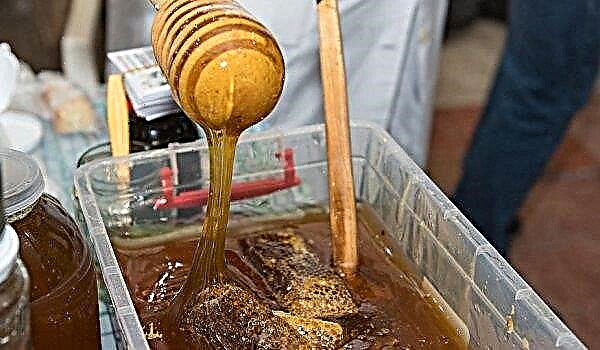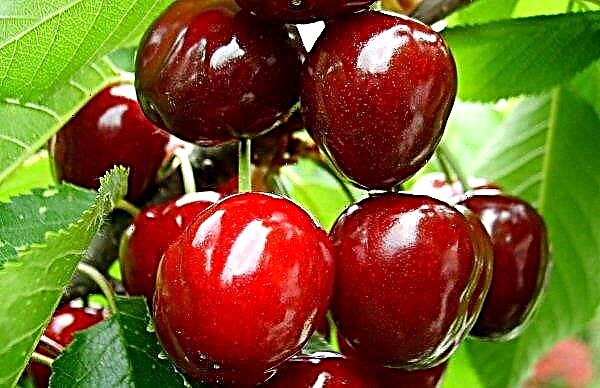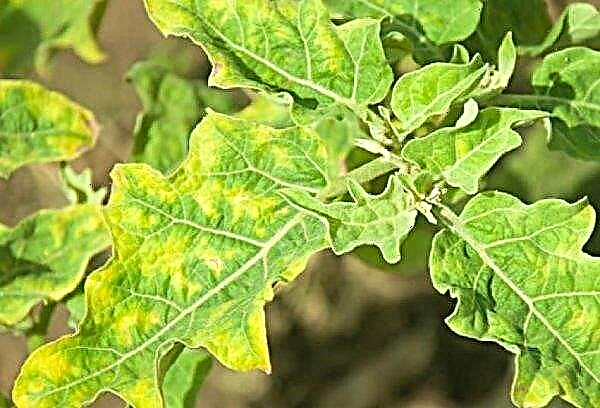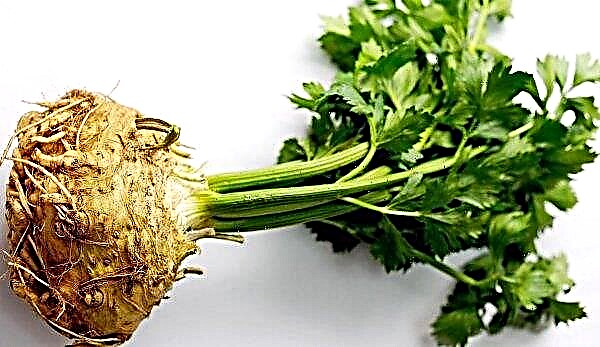Each gardener wants to plant the best tomato variety in order to collect a large and high-quality crop. One of the prolific and tasty varieties is the hybrid of Andromeda. All about the variety, including agricultural farming technology, read in this review.
Grade description
The hybrid appeared thanks to the work of Russian breeder A. Mashtakov. The variety can be grown in greenhouses and greenhouses, and can be in open areas.
Characteristics of andromeda:
- matures early, 115 days after planting;
- in open ground, bushes grow up to 70 cm, in greenhouse conditions - up to 1 m;
- not too sprawling bush has thick stems, large, triangular-shaped leaves;
- the first inflorescence is formed over the 6th leaf, forming up to 6 fruits;
- the fruits are of medium size, weighing 70-140 g, the shape is rounded flat in the area of the stalk, color red;
- the pulp is dense and juicy, sweet and sour, contains about two chambers with seeds;
- thanks to a dense skin it is well stored and transported;
- productivity of a grade of 10 kg / m2;
- tolerates temperature differences;
- “Red andromeda” is prone to late blight, is resistant to other diseases with good care.
Varieties
The Andromeda hybrid, in addition to the red subspecies, has two more varieties.
In general, they have common characteristics, but there are several differences:
Advantages and disadvantages
Any culture has its own strengths and weaknesses. The Andromeda hybrid is no exception.
- Of the advantages of the variety distinguish:
- early ripening;
- transportability;
- good immunity;
- pleasant taste;
- long storage.
- The minuses of a tomato are:
- weak root system;
- requires frequent top dressing.
Did you know? The very first recipe for a cookbook using tomatoes was published in 1692 in Naples.
Features of growing seedlings
The variety is grown in seedlings. Buying planting material is better in the store, and not with hands.
Optimal timing
Given early ripening, sowing is carried out until mid-March.
Soil mix
The soil for the tomato should be neutral in acidity or slightly acidic, have good moisture and air permeability. Prepare the composition of the soil mixture:
Prepare the composition of the soil mixture:
- garden land - 2 parts;
- peat - 1 part;
- sand - 0.5 parts.
Before planting, about a day, the soil must be sieved and disinfected: steamed in a water bath or calcined. After the procedure, the soil should "rest" for 12 hours.
Capacity for growing
The variety has weak roots, so it is better to plant without subsequent picking in separate cups. Put them in one box.
Seed preparation
Seeds are sorted, debris is removed and soaked in a weak solution of potassium permanganate for 2-3 hours. Pop-up seeds are removed: they are barren. Suitable for sowing material is additionally treated with the growth stimulator "Epin".
Sowing seeds
Sowing is carried out to a depth of 2-3 cm, sprinkled with soil and sprayed from a spray bottle. The general box is covered with glass. The container is placed in a darkened warm place with t + 22- + 25 ° С.
Seedling Care
After the emergence of the shoots, the glass shelter is removed, the seedlings are placed in a lit place, at t + 18 ° C- + 20 ° C. Lighting is supplemented with artificial lamps so that daylight hours last at least 12 hours. When two strong leaves appear from a common crate, the plants are not taken out of the glass, transplanted into separate pots.
Watering is carried out moderate, as the soil dries. The variety needs enhanced nutrition, so at the seedling stage, before transplanting, at least 3 top dressings are carried out.
It is best to use complex preparations, according to the instructions:
- Amophos
- "Kemir Universal";
- "Combi."
Seedling hardening
10 days before the transplantation, the hardening procedure is started: the pots with seedlings are taken out to fresh air, starting from half an hour, gradually increasing to a full day on the street.
Did you know? In Ukrainian Zaporozhye, in the village of Kamenka-Dneprovskaya, a monument "Glory to the tomato" was erected. On a square pedestal— huge red fruit.
Planting seedlings in a permanent place
Tomatoes are transplanted into open ground in May, when the soil is warmed up to at least + 17 ° C. In regions with a cold climate, dates can be shifted to the first decade of June. The site should be lit, as even as possible. Groundwater is not given much attention, since the Andromeda roots do not grow deeply. Site preparation is carried out in the fall, it is dug up and fertilizers are applied:
Site preparation is carried out in the fall, it is dug up and fertilizers are applied:
- humus - 5 kg / m2;
- lime (with increased acidity) - 700g / m2;
- superphosphates - 40g / m2.
Important! You can not plant tomatoes after other solanaceous crops, this increases the risk of diseases.
In the spring, the earth is again dug up half a shovel and phosphate and potassium fertilizers are applied (20 g / m2 each).
When transplanting, seedlings are carefully transshipped from cups so as not to damage the roots.
Landing pattern:
- frequency - 4 bushes per m2;
- the depth of the hole - according to the size of the root system;
- the distance between the rows is 70 cm;
- the distance between the bushes is 40-50 cm.
After the procedure, seedlings need to be poured with warm soft water.
Outdoor Care
The variety due to a weak root system needs careful maintenance. It is especially important to observe the frequency of fertilizers and the humidity regime.
Watering
Watering should be carried out at the root, in a drought, you can additionally spray plants. You need to do this in the evening so that the sun does not burn the leaves. Bushes are watered as they dry (10 cm of the topsoil). With sufficient rainfall, watering is reduced, and bushes can only be spud.
Top dressing
Before the flowering period, enough fertilizer is applied to the soil before planting. During the formation of inflorescences, the preparation “Kemira-universal” is applied to the soil (at the rate of 30g / m2). In the active phase, flowering is fed every 15 days with an aqueous solution of the drug "Crystal" in a ratio of 10g / 10l.
During the fruiting period, fertilize with Kristallon every three weeks, reducing the amount of the drug to 2 g.
Stepson
The plant is formed into two stems, and in order not to thicken the planting, they are pinching. It is better to remove unnecessary shoots with the help of garden shears, having previously disinfected them. Sections must be processed with powdered charcoal.
Soil care
After irrigation, the soil is loosened, saturating it with oxygen. Deep loosening is not recommended: the roots are superficial. It is imperative to remove weed herbs that draw moisture and nutrients from the ground.
In the absence of time to care for plants, you can use mulch from straw or sawdust. Such a coating allows longer to retain moisture in the soil and inhibits the growth of parasitic plants.
Bush tying
When grown in a warm climate, you can do without tying, as the bushes do not grow too much.
In cold regions, the plant stretches to the sun, the branches become thinner. So that the stems do not break under the weight of the hands with the fruits, it is advisable to tie them up. Each bush is tied separately, using a wooden peg as a support. The tape should not be too thick so as not to injure the stems.
Each bush is tied separately, using a wooden peg as a support. The tape should not be too thick so as not to injure the stems.
Preventative treatment
Andromeda has strong immunity, but it can still be affected by diseases due to errors in care.
Prevention measures are as follows:
- seed and soil disinfection;
- crop rotation compliance;
- compliance with the frequency of landing;
- stepsoning to prevent thickening;
- timely top dressing;
- treatment with 1% Bordeaux fluid (once every three weeks after disembarkation)
- dusting the soil with wood ash;
- soil cultivation with potassium permanganate solution after harvesting.
Important! It is impossible to carry out preventive treatments during fruiting.
Prevention from pests is compliance with humidity and planting density. Plants that produce volatile, having an unpleasant odor for parasites can scare away insects:
Plants that produce volatile, having an unpleasant odor for parasites can scare away insects:
- calendula;
- sagebrush;
- garlic.
When pests occur, you should purchase the drug "Actara" or "Fitoverm." Both destroy most parasites, including the Colorado potato beetle.
Important! When fertilizing the soil from the stem of the tomato, they retreat 10 cm.
Harvesting
The variety ripens amicably, evenly, by the end of August. Tomatoes are harvested in the stage of technical ripeness. Break off with the stem for longer storage.
Fresh tomato is stored for about three months. For storage, the fruits are placed in a box filled with dry sawdust, stalk up. You need to make sure that all tomatoes are healthy, they are without dark spots or damage to the skin. Storage location - cellar or dry basement.
You can grow a good and tasty crop, subject to the rules of agricultural technology and crop care. Andromeda well tolerates transportation over long distances and is perfectly stored. In cooking, it is used both fresh and in winter preservation.

